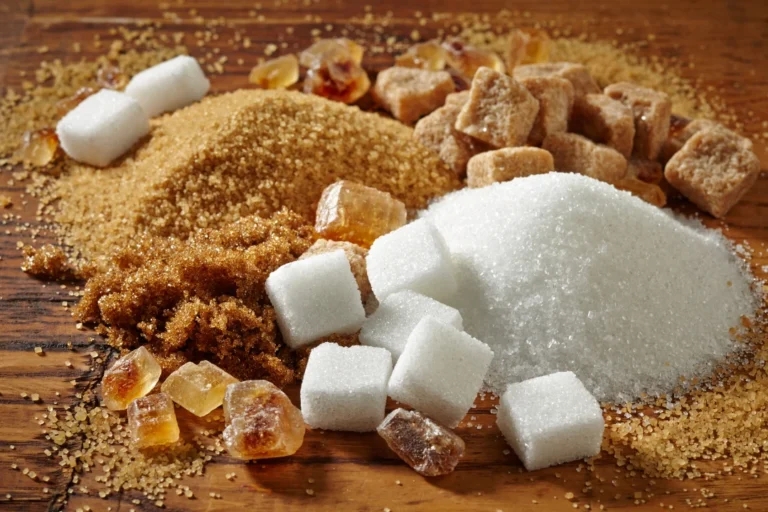In comparison to all other types of coffee, where you can go with the preference, for Cuban coffee, sugar plays a crucial role. This is because of the sugar foam that is the most recognizable aspect of this brew.
So what is the best sugar for Cuban coffee? Right away, we can say it’s white granulated sugar. But let’s see what you can expect with other types of sugar.
Why Does Sugar Matter in Cuban Coffee?
Sugar is a core ingredient that defines the drink. When whipped with the first concentrated drops of coffee, it transforms into espuma, a light and creamy paste. Here you can see a step-by-step guide on how to make sugar foam for Cuban coffee.
Without sugar, the coffee would taste strong and slightly bitter. With it, the flavor becomes balanced and smooth. The foam layer also gives the coffee its glossy top and caramel aroma.
Check out our pro tips on how to use a Cuban coffee maker.
Best Sugar for Cuban Coffee – White Granulated Sugar
White granulated sugar is the classic choice for Cuban coffee. It dissolves quickly in hot espresso and whips easily into foam. The result is smooth, glossy espuma with a light caramel color and clean sweetness.
This type of sugar gives the coffee its familiar flavor: sweet but not heavy, creamy but not sticky. It also allows the deep roast notes of the coffee to come through clearly.
If you want the most authentic version of cafe Cubano, white sugar is the best option.
For the correct sugar-to-coffee ratio, see our guide on how much sugar to add to Cuban coffee.
Brown Sugar for Cuban Coffee: Richer, Deeper Flavor
Brown sugar creates a different kind of sweetness. It contains molasses, which gives the foam a darker color and a heavier, more caramelized taste. The espuma will be thicker and slightly grainier, with a deeper aroma.
The flavor is richer and more dessert-like compared to the clean sweetness of white sugar. It is ideal if you enjoy a bold cup with more body and depth.
Just remember that brown sugar changes both color and texture. The foam will look darker and may settle faster, but the taste is smooth and indulgent.
Raw and Turbinado Sugar for Cuban Coffee
Raw sugar and turbinado sugar are less refined versions of white sugar. They have larger crystals and a hint of natural molasses that gives a mild toffee-like flavor.
When used in Cuban coffee, these sugars create a lighter espuma with a more rustic texture. Because the grains are coarser, they take a little longer to dissolve. You will need to stir faster and longer to achieve a creamy foam.
The flavor is more subtle than brown sugar but still warmer than white sugar. If you prefer a natural sweetener that keeps most of the coffee’s roasted character, raw or turbinado sugar is a good choice.
Demerara and Muscovado Sugars
Demerara and muscovado sugars are less common in Cuban coffee, but they can create unique variations in flavor.
Demerara sugar has large golden crystals and a gentle caramel taste. It dissolves a bit faster than raw sugar and makes a light brown espuma that adds a smooth sweetness. It is a balanced middle ground between white and brown sugar.
Muscovado sugar is darker, stickier, and rich in molasses. It produces a heavy foam and deep, earthy sweetness that can almost taste like caramel sauce. Because it is dense, it can easily overpower the coffee’s natural flavors if you use too much.
Both types work well if you want to experiment with richer tones, but for the traditional Cuban flavor, white sugar still performs best.
Can You Use Sugar Alternatives?
Artificial sweeteners and sugar substitutes cannot make real espuma. They do not contain natural sugars that caramelize or whip into foam when mixed with hot coffee.
If you use sweeteners such as stevia, monk fruit, or sucralose, add them after brewing instead of trying to whip them. The coffee will still taste sweet, but the texture will be different.
Honey or maple syrup can be used as natural alternatives, but they will not produce foam either.
FAQ
What kind of sugar is traditionally used in Cuban coffee?
White granulated sugar is the traditional and most authentic choice. It dissolves quickly, forms smooth espuma, and gives Cuban coffee its classic sweet and creamy balance.
Can I use brown sugar instead of white sugar?
Yes, but it changes the flavor and appearance. Brown sugar adds a deeper, molasses-like sweetness and makes the foam darker and thicker. It is perfect if you enjoy a bolder taste.
Does the type of sugar affect the foam?
Yes. Fine-grained sugars like white or demerara dissolve faster and create smoother foam. Coarse sugars such as raw or turbinado make the foam grainier unless you stir quickly while the coffee is still hot.
Can I make espuma with sugar substitutes?
No. Artificial sweeteners and low-calorie sugar alternatives do not caramelize or whip properly. They can sweeten the coffee, but they will not create the signature foam on top.
Key Takeaways
Sugar is what transforms strong espresso into smooth, balanced cafe Cubano through the creation of sugar foam, or espuma.
- White granulated sugar is the best choice for authentic Cuban coffee. It dissolves quickly, creates smooth foam, and gives the coffee a clean, caramel sweetness.
- Brown sugar adds a darker color and a richer molasses flavor with a thicker, dessert-like foam.
- Raw and turbinado sugars bring a mild toffee note and a rustic texture, but they take longer to dissolve.
- Demerara sugar offers balanced caramel sweetness, while muscovado gives a heavy, syrupy flavor that can overpower the coffee if overused.
- Sugar substitutes, honey, and syrups cannot create true espuma since they do not caramelize or whip.

